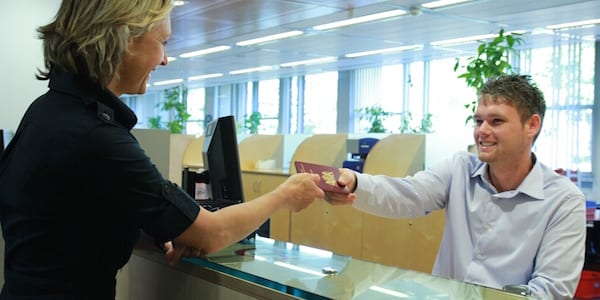
Lean government: a Dutch city adopts lean thinking
INTERVIEW - The historical city of Amersfoort in the Netherlands has introduced lean thinking and practice in local government to provide better and faster services to its citizens.
Interviewees: Joost Klein Velderman, Master Black Belt, and Anne Brandse-Westerink, Black Belt, Amersfoort Municipality
Interviewer: Roberto Priolo, Editor, Planet Lean
Roberto Priolo: Tell us about Amersfoort.
Joost Klein Velderman: Amersfoort is a historical city of 150,000, located in the heart of the Netherlands, near Utrecht. We are known for our beautiful medieval center – we celebrated the city’s 750th birthday in 2009 – and for being one of the most important railway junctions in the country. We are the 14th largest city in the country.
RP: When did your lean journey start?
JKV: It started in one department in late 2009 with two small projects. Even though there was no plan in place at the beginning, it spread like an oil spill as more and more people developed an interest in what we were doing and asked to become a part of it. It grew organically to touch all of our 20 departments (not all to the same extent) wherever we found supportive department heads.
Anne Brandse: We developed Yellow Belt training for our people, and we now have 350 colleagues that are certified. By May, half of our people will be trained, and before the summer all our middle managers will too.

RP: What are the biggest obstacles to applying lean in a government environment?
JKV: First of all, the political cycle causes leadership to change periodically. And with a new boss come new problems. Priorities will change all the time, which means we need to be very adaptable. It takes a lot of time and a lot of effort to instill a lean culture in an organization, and the only way to do it in an environment like ours is by making it grow from the bottom up.
AB: Every political leader wants to have our customers served – people come to us to get their passport issued or to get a driving license, and those are the kind of needs we need to meet, regardless of the political party in charge.
JKV: The better we do it and the smaller the efforts we need to make it happen are, the better it is for our city. You invest a lot at first, but then it becomes a virtuous cycle.
RP: Is leadership supportive of your attempts to make the municipal government leaner?
JKV: More than supportive. Two years ago we realized that despite all the projects we ran were successful we were somehow slowing down. We needed top management to be an active part of our initiative as opposed to just assign a problem to a lean team and except results. Now that leadership is involved, we notice a huge difference.
AB: At the moment we are training middle managers, teaching them what it takes to be a lean leader and what behaviors are necessary to manage people and processes in a lean way.
RP: Can you tell us about the Roadmap you have developed?
JKV: We built a maturity framework for the organization, and the involvement of senior leadership and now middle management is part of that. We have a vision, our True North, and a set of goals to get there. By early 2017 we want to get to the next level on the framework.
We are getting better at defining what these individual steps look like, but it is a fluid, dynamic situation. We have an idea of what we want to be and are experimenting as we go. For us as a lean team, we need to let go and let the middle managers step in.
As an organization, we want to be proud of where we work. That’s at the core of our vision for 2020.
AB: There are other things. We want to do things right first time; we want to ensure all our customers are satisfied, not just most of them; we want to give them undivided, personalized attention; and we don’t want to do tomorrow what we can do today.
Our customers can’t choose to go somewhere else, and it is our responsibility (and dream) to serve them as well as they deserve.
RP: What was the reason you decided to embark on a lean journey?
AB: Our lead-times for serving customers were way too long. Even though they were within legal requirements, we wanted to do better.
JKV: We didn’t have an actual burning platform. We actually fared very well in all rankings, and people responded to that by saying: “See, we are already good!” But we knew we could be way better. Building a transformation on a sense of excitement rather than a sense of urgency can be very difficult.
There is no law that says we need to improve what we are doing, but we still want to. Why would it take us six weeks to do something we can do in our hour?

RP: Can you share some of the results the Municipality of Amersfoort was able to achieve?
JKV: Of course. We have been able, among other things, to decrease the average waiting time at City Hall counters (for people applying for passports or renewing driver’s license, for example) from 12 minutes to three minutes. The maximum waiting time went down from 75 to 25 minutes, and there are a lot more openings for making an appointment, which means being served right away instead of simply walking in and having to wait.
Public space repairs (like broken pavements or traffic lights, but also landscaping) are now handled in eight instead of 19 days. The number of complaints that take longer than four weeks to handle has decreased from 17% to 6%. We have also increased the amount of complaints that are handled right first time, from 52% to 83%.
Tax exemption applications (for example for citizens with low income) are processed in three weeks instead of three months. When documentation is missing, notice to the applicant is given in one day instead of 11 weeks.
We have also made it easier for people to apply for welfare, handling applications in seven days instead of 19. If after four weeks (28 days) an application hasn’t been approved, an advance payment has to be issued. The amount of advance payments has decreased from 35% to 6%, while the number of cases that are handled right first time has gone up, from 79% to 96%.
THE INTERVIEWEES


Read more


FEATURE – A lean coach from Argentina reflects on the transformations he has supported across Latin America and on why lean can help unlock the potential of the continent.


FEATURE – Visualizing the work, increasing customer focus and changing the way to interact with employees has helped a family-run Dutch building maintenance and renovation firm to transform itself.


NOTES FROM THE GEMBA – At GHU Paris, leadership pairs strategy with gemba visits, 5C problem-solving, and cross-functional learning to create a resilient, people-centered improvement culture in psychiatric care.


CASE STUDY – Designing good products is challenging in itself, but doing so in harsh, impenetrable environments like the seafloor presents even bigger problems. The answer? Lean product development.

